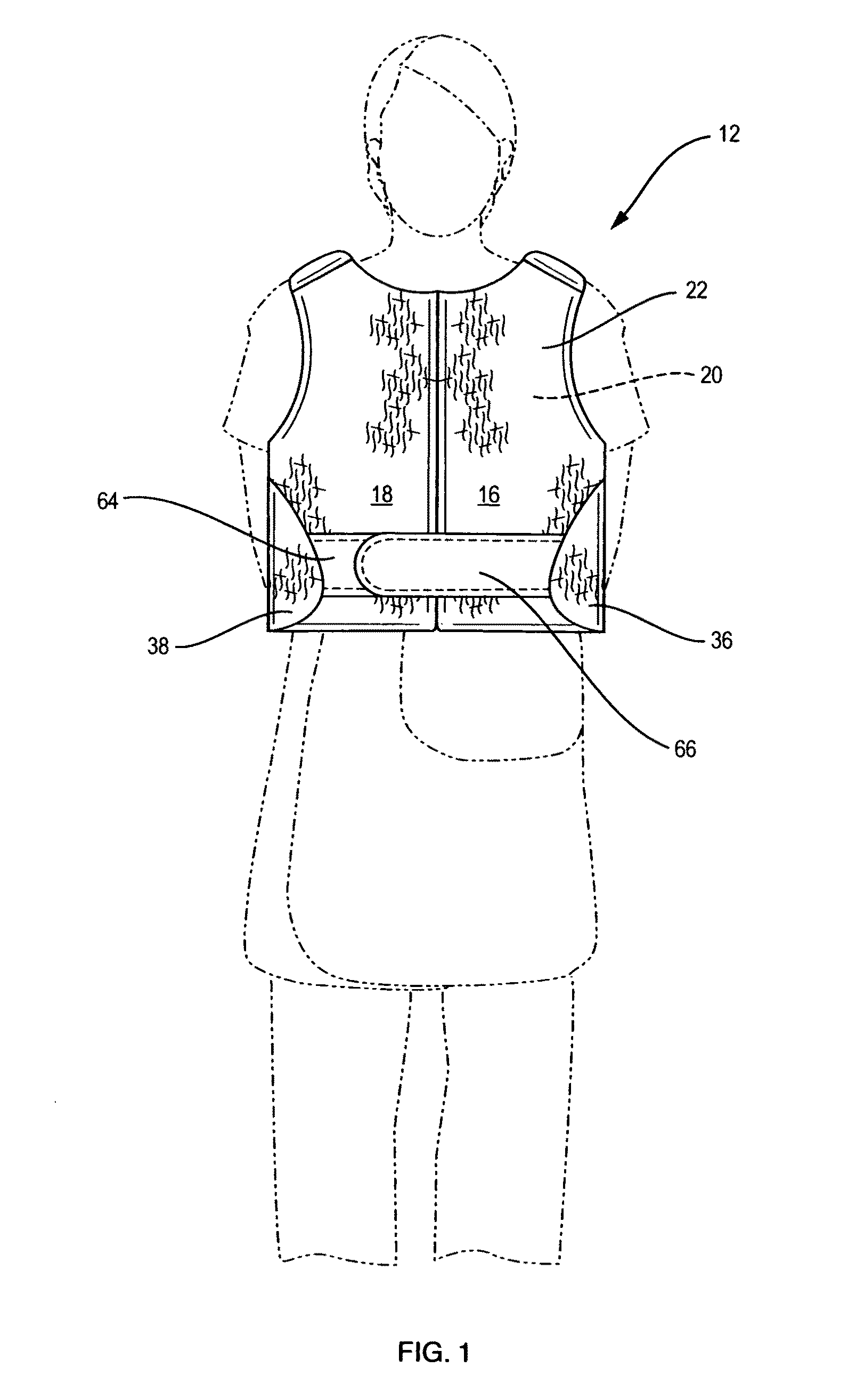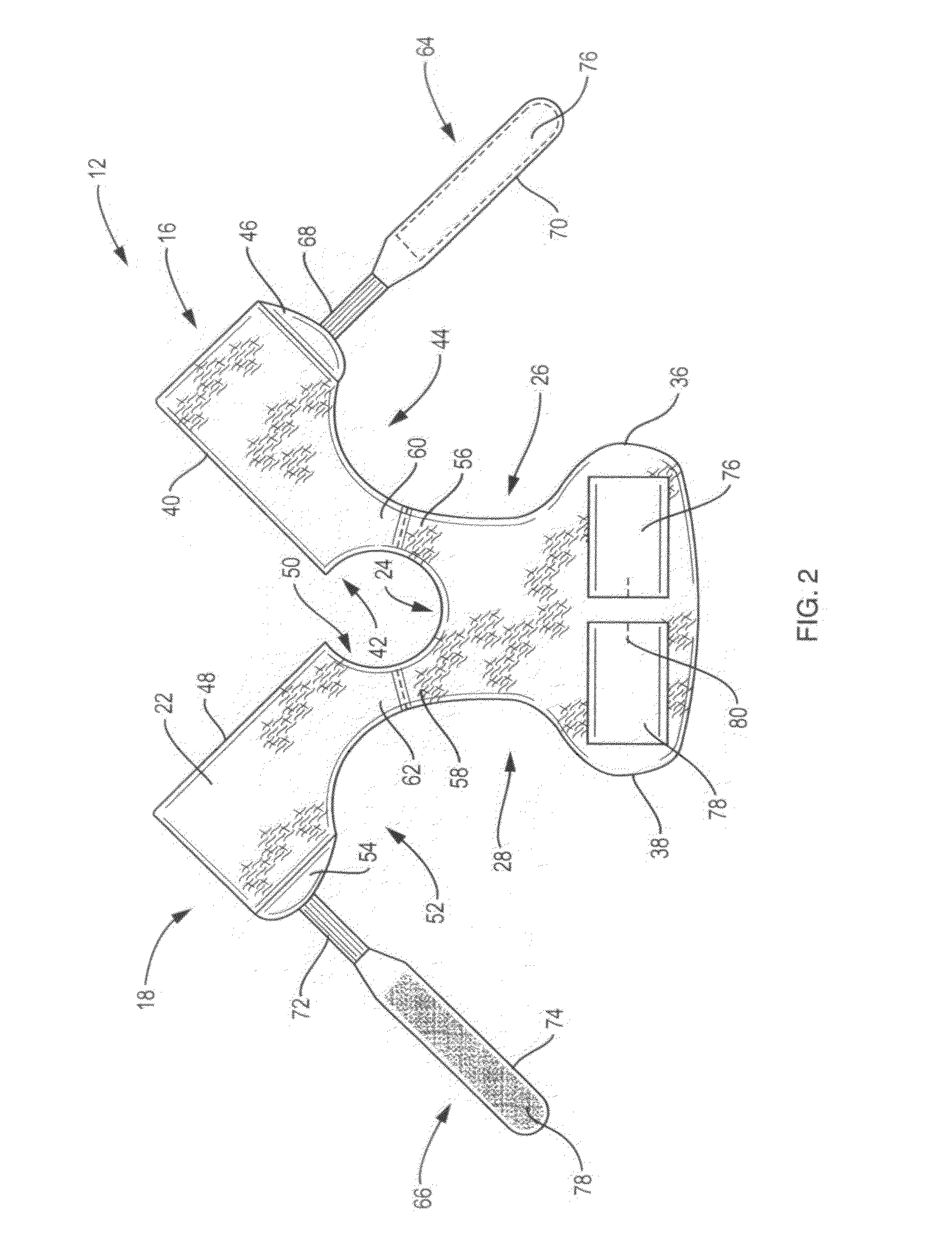Radiation protective vest
a technology of radiation protection and garments, applied in the direction of shielding, nuclear engineering, nuclear elements, etc., can solve the problems of cumbersome radiation protection garments, limited weight distribution, and inability to control the transfer of weight from shoulders to backs, so as to achieve easy to put on and take off, and increase radiation protection
- Summary
- Abstract
- Description
- Claims
- Application Information
AI Technical Summary
Benefits of technology
Problems solved by technology
Method used
Image
Examples
Embodiment Construction
[0013]Referring now to the drawings, particularly FIGS. 1 and 2, there is shown a radiation protective garment 12 embodying the present invention worn by a user. In the illustrated embodiment, radiation protective garment 12 is a vest having a substantially rectangular back panel 14, a substantially rectangular a left front panel 16 and a substantially rectangular right front panel 18. Each panel 14, 16, 18 contains radiation shielding material 20 within a durable covering 22, for example, a nylon material.
[0014]As shown in FIGS. 2, 3 and 4, back panel 14 has an arcuate cutout 24 at its top margin and arcuate cutouts 26,28 at opposite upper side margins. Arcuate cutout 24 forms a portion of a neck opening 30 of vest 12 and arcuate cutouts 26,28 form portions of a left arm opening 32 and a right arm opening 34, respectively. Elongated flaps 36 and 38 are formed at opposite lower side margins of back panel 14.
[0015]Left front panel 16 has a substantially straight inner side 40. Left f...
PUM
 Login to View More
Login to View More Abstract
Description
Claims
Application Information
 Login to View More
Login to View More - Generate Ideas
- Intellectual Property
- Life Sciences
- Materials
- Tech Scout
- Unparalleled Data Quality
- Higher Quality Content
- 60% Fewer Hallucinations
Browse by: Latest US Patents, China's latest patents, Technical Efficacy Thesaurus, Application Domain, Technology Topic, Popular Technical Reports.
© 2025 PatSnap. All rights reserved.Legal|Privacy policy|Modern Slavery Act Transparency Statement|Sitemap|About US| Contact US: help@patsnap.com



